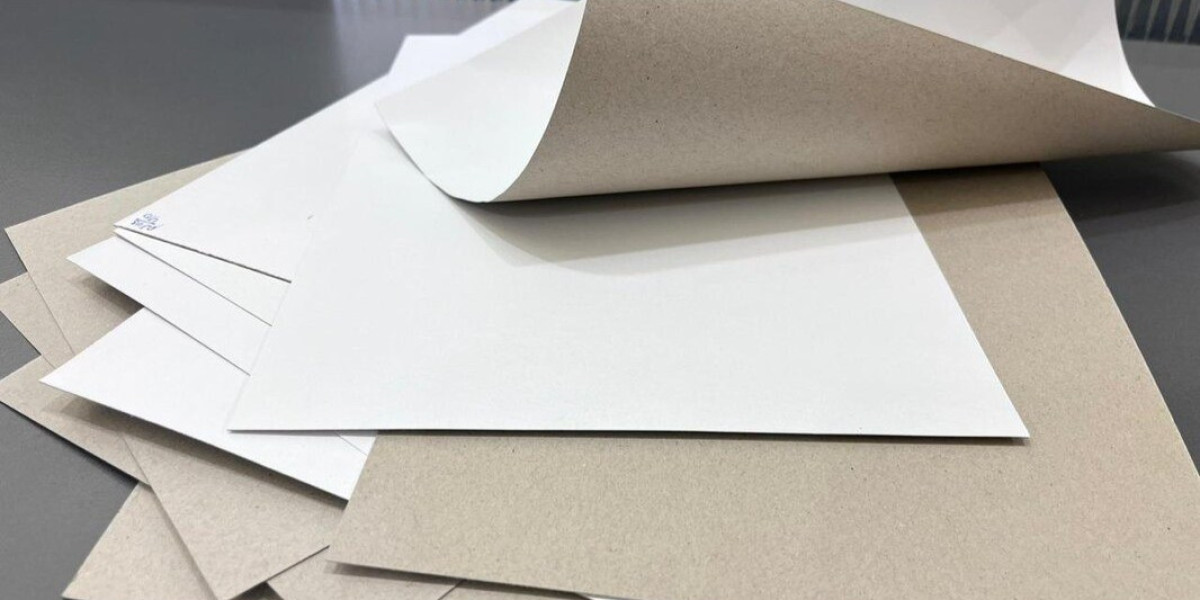Duplex paper board is a versatile material widely used in packaging, printing, and manufacturing due to its durability, cost-effectiveness, and printable surface. With the growing demand for sustainable and customizable packaging, understanding how to use duplex board effectively can give businesses a functional and economic edge. This guide covers the essentials—what duplex board is, where it excels, how to choose the right type, and best practices for maximizing its utility.
What Is Duplex Paper Board?
Duplex board is a type of paperboard with two layers: a smooth outer surface suitable for printing and a rougher, more fibrous inner layer. The outer layer is often coated with white or gray pigment to enhance printability, while the inner side provides strength and support. This makes it ideal for applications that require both visual appeal and structural integrity.
It comes in various finishes, including uncoated and coated types. A coated duplex board has a polished surface that enhances print quality, which is especially useful for retail packaging that needs to stand out on shelves. The coating also adds a layer of protection against moisture and smudging.
Key Applications
Duplex board is used across several industries. Here are some common applications:
Packaging Boxes: Widely used for cereal boxes, medicine cartons, and cosmetic packaging.
Food Containers: Ideal for dry food items, take-out boxes, and frozen food packaging due to its hygienic qualities.
Stationery Items: File folders, index cards, and book covers often utilize duplex board for its rigidity.
Industrial Packaging: Its strength allows it to support heavier items, such as electronic goods or tools.
Businesses sourcing these products often look to Duplex Board Manufacturers In India because of competitive pricing and scalable production capacities.
Choosing the Right Duplex Board
To use duplex board effectively, it's essential to select the right type for the intended application. Key factors include:
Thickness (GSM): Measured in grams per square meter, the GSM affects the board's stiffness and weight. Higher GSM values are suitable for more robust packaging.
Coating Type: Choose between single-coated, double-coated, or uncoated options depending on print requirements.
Color of Back Layer: Some duplex boards come with white or grey back layers. A white back is preferable for high-end packaging, while a grey back is cost-effective for industrial use.
Surface Finish: A glossy finish can enhance visual appeal, while a matte surface may be better for writing or labeling.
One variation worth noting is the Duplex Kraft Board, which blends the durability of kraft paper with the versatility of duplex board. It’s particularly useful for eco-conscious packaging solutions that still require strength and printability.
Printing on Duplex Board
The coated surface of duplex board is excellent for printing. For best results:
Use UV or Offset Printing: These methods provide high clarity and vibrant color retention.
Check for Ink Absorption: The coated surface absorbs less ink, reducing drying time and smudging risk.
Test Before Mass Production: Different inks and coatings interact in unique ways—run a small batch before a full-scale job.
Proper alignment and print calibration ensure that designs remain sharp, colors consistent, and branding intact.
Cutting and Folding
Duplex board can be easily cut, creased, and folded using standard die-cutting and scoring equipment. However, care must be taken to:
Avoid Splitting: The inner fibrous layer can sometimes split if creased too sharply.
Use Sharp Blades: Dull tools can cause jagged edges or compression marks.
Test Bending Angles: For packaging that requires folding, test the board’s fold resistance to prevent cracks.
Professional finishing adds to the board's utility, especially when producing retail-ready packaging that must withstand handling.
Lamination and Coating
Enhancing the surface of duplex board through lamination or additional coating can increase its durability and aesthetics. Options include:
Gloss or Matte Lamination: Protects print and adds to visual appeal.
Aqueous Coating: Adds a thin protective layer that resists moisture.
Foil Stamping and Embossing: Enhances brand identity with tactile and visual effects.
These enhancements can help position a product as premium or high-value while maintaining the cost benefits of duplex board.
Environmental Impact
Duplex board is typically made from recycled paper, making it a more sustainable packaging material than plastic or pure virgin fiber board. Still, not all duplex boards are created equal. Look for suppliers that offer:
Recyclable and Biodegradable Boards
Certifications such as FSC (Forest Stewardship Council)
Reduced Use of Harmful Chemicals
Choosing eco-conscious sources, like some of the newer Duplex Board Manufacturers In India, helps companies align with global sustainability goals without compromising on quality.
Cost Considerations
Duplex board is more affordable than many alternatives like solid bleached sulfate (SBS) board or rigid boxes. To optimize costs:
Order in Bulk: Many suppliers offer significant discounts on large volumes.
Source Locally: This reduces shipping time and costs.
Customize Wisely: Adding finishes or custom shapes can increase cost—choose only those necessary for your brand.
Common Pitfalls to Avoid
Even though duplex board is easy to use, there are some common mistakes that can reduce its effectiveness:
Overprinting: Too much ink can cause the coated surface to warp or smudge.
Ignoring GSM Requirements: Using a board that’s too thin may lead to product damage or poor customer impressions.
Underestimating Moisture Impact: Especially in humid climates, boards with inadequate coating can absorb moisture and deform.
Being aware of these issues can help businesses avoid costly reworks and returns.
Final Thoughts
Duplex paper board is a smart choice for businesses seeking a balance between cost, functionality, and appearance. Whether you're in food packaging, retail, or industrial manufacturing, it offers a practical solution that’s both customizable and sustainable. Understanding how to select, print, cut, and finish it properly is key to making the most of its benefits.
With options like Duplex Kraft Board and coated duplex board, there’s plenty of room for adaptation based on your specific needs. By sourcing from reliable Duplex Board Manufacturers In India, companies can stay competitive while maintaining quality and consistency.
As the demand for eco-friendly and efficient packaging grows, duplex paper board remains one of the most reliable materials to meet evolving consumer expectations and business goals.







